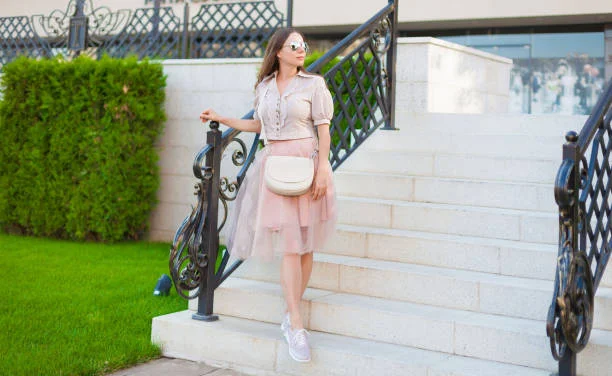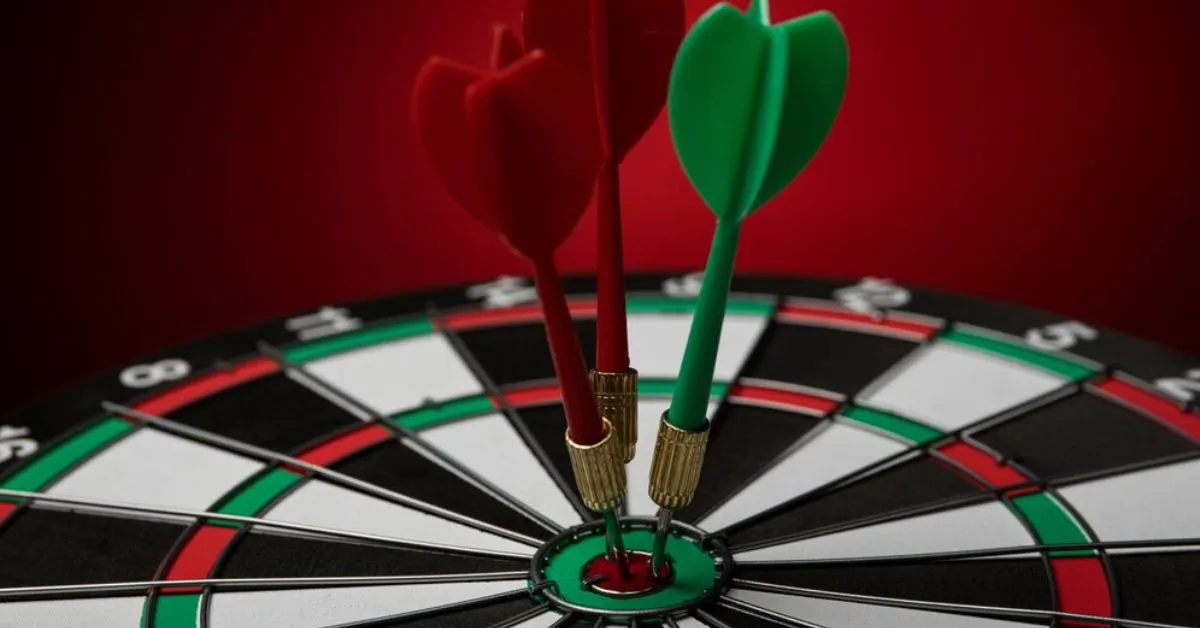FASHION
From Threads to Tales: Stories Behind Traditional Ikat Motifs

Clothing and fabrics are more than just things you wear or design with. They are unique pieces that have stories and heritage of their own. Ikat fabrics, for example, are more than just a kind of art. Each complex design is a mosaic that incorporates history, culture, and storytelling. Legends that transcend space and time are embodied in the traditional Ikat motifs that have been passed down through the years.
If you are someone who is planning to buy Ikat fabrics online or own some already, you must have noticed the interesting patterns on them. What do the motifs mean and what stories are you conveying while wearing your statement pieces? Read on to find out the stories that underlie these alluring patterns, exposing the symbolism and cultural value that are woven into each one.
Meanings of Ikat Motifs
When it comes to traditional art, there’s always something that goes beyond what’s on the surface. It could be a painting you found at a museum, a vase you found at an art gallery, or even Ikat fabrics you spotted at Alesouk. Renowned brands like these have quality products that you can trust – original stories that have been passed down through generations without tainting their beauty.
Without further ado, here are some common motifs you can spot on Ikat fabrics online, and what they mean:
- Geometric Prints
Geometric patterns are a common element of traditional Ikat motifs when you buy designer fabrics by the yard, and each one has a deep cultural symbolism. Diamonds, triangles, and squares frequently stand for cosmic components, and recurring patterns signify the interconnection and cyclical cycle of existence. Ikat motifs’ geometric symmetry illustrates a timeless idea that many societies have embraced: the harmony between the heavenly and the earthly.
- Natural Hues
Ikat weaving pays respect to nature with floral and faunal designs. Symbolic objects like flowers, leaves, and animals are generally associated with fertility, growth, and lasting success. Different locations will use different motifs. For example, some civilizations incorporate native plants and animals into their patterns, resulting in a visually compelling story that is closely linked to the natural world.
- Mythical Creatures and Deities
Some Ikat motifs represent gods and mythical creatures, incorporating spirituality and folklore tales into the fabric. The threads are frequently adorned with dragons, lions, and celestial figures that represent strength, protection, and divine favors. These themes act as a cultural archive, conserving the myths and narratives of bravery that have molded societies for ages.
- Cultural Narratives
Ikat motifs frequently convey stories that capture the essence of the community’s culture. The threads serve as a canvas for conserving cultural legacy, ranging from symbols signifying rites of passage to patterns indicating social standing. When you wear such prints, it is almost like stating your beliefs and ideas out loud. Every motif takes on the role of a silent narrator, sharing the distinctive customs, practices, and ideals that the weavers and their communities hold dear.
- Journey of Life
Certain Ikat patterns have motifs that depict profound beliefs and simple life truths. It could be something as simple yet deep as different life phases and milestones in various colors or sizes, symbolizing the journey of life. Different patterns are frequently used to represent birth, marriage, and death, resulting in a visual record of the human experience. These themes serve as a reminder of life’s cyclical nature in addition to celebrating life’s significant occasions.
- Sacred Geometry
For the production of motifs, holy geometry is crucial in many Ikat traditions. Mandalas, circles, and other complex geometric shapes have spiritual meaning because they symbolize the order of the cosmos and the interdependence of all living things. An artisan can connect with the spiritual essence of creation via the contemplative act of weaving these sacred symbols into cloth.
- Color Symbolism
In addition to the patterns themselves, Ikat motifs’ color schemes are rich in symbolic meaning. A few examples include yellows as a symbol of wealth and happiness, blues of serenity and spirituality, and reds of energy and passion. Ikat weaving’s skillful color blending conveys a narrative of cultural values, feelings, and the rich fabric of human experiences.
- Rituals and Ceremonies
Textiles used in ceremonies and rituals frequently incorporate ikat designs. Religious clothing, ceremonial clothes, and wedding attire are embellished with motifs that represent protection, blessings, and the sacredness of the occasion. These fabrics form an essential component of ceremonies, tying the wearer to spirituality and tradition.
Summing Up
The legends that surround classic Ikat patterns provide a tribute to the rich artistic and cultural legacies of people all over the world. Ikat fabric is made of carefully dyed and woven threads, each holding timeless stories. These stories and cryptic clues push us to discover more and enjoy the richness of meaning woven into the fabric.
FASHION
BaddieHub: the Online Playground of Fashion and Trends

Welcome to the vibrant world of BaddieHub, where fashion meets fierce and trends come alive! This online playground has become a hotspot for trendsetters and style enthusiasts alike. With its bold aesthetics and unapologetic attitude, BaddieHub embodies a cultural movement that’s reshaping how we view beauty and self-expression. Here, every click opens a door to inspiration—whether it’s through outfits that scream confidence or makeup looks that redefine glam. Join us as we dive deep into this exciting realm, exploring the rise of baddie culture, its impact on fashion, and what makes BaddieHub an essential destination for those daring enough to embrace their inner baddie.
The Emergence of Baddie Culture
Baddie culture has emerged as a vibrant expression of self-confidence and individuality. Its roots can be traced back to social media platforms, where influencers began showcasing bold fashion choices and unapologetic attitudes.
The term “baddie” encapsulates women who embrace their power through style. Think fierce makeup, body positivity, and a love for all things glamorous. This movement celebrates diversity, encouraging everyone to redefine beauty on their own terms.
As baddie influencers gained popularity on Instagram and TikTok, they created an online community that thrives on empowerment. It’s about more than just clothes; it represents a lifestyle where personal expression reigns supreme.
Fashion brands quickly took notice. Collaborations with baddies have shifted the industry landscape, bringing fresh ideas into mainstream trends. This cultural phenomenon is reshaping conversations around femininity while captivating audiences worldwide.
How BaddieHub is Changing the Fashion Game
BaddieHub is reshaping the fashion landscape, offering a fresh platform for self-expression. It embraces diversity and empowers individuals to showcase their unique styles.
The user-generated content drives trends like never before. BaddieHub allows fashion enthusiasts to share their looks instantly, making it easier for others to replicate or adapt them. This accessibility fosters creativity among users.
Moreover, BaddieHub champions boldness in style choices. From striking colors to daring combinations, the platform encourages members to step outside conventional boundaries.
As influencers navigate this vibrant community, they set new standards that traditional fashion houses struggle to keep up with. The emphasis on relatability and authenticity resonates deeply with audiences looking for genuine inspiration.
BaddieHub isn’t just an online store—it’s a cultural movement redefining what it means to be fashionable today.
ALSO READ: Exploring the Rich History and Cultural Significance of Buší
Top Trends on BaddieHub
BaddieHub is a vibrant hub of creativity, showcasing the latest trends that define baddie culture. Bold hairstyles are making waves, with neon colors and edgy cuts taking center stage.
Streetwear continues to reign supreme. Oversized hoodies paired with form-fitting bottoms create an effortlessly chic look that’s both comfortable and stylish. Accessories play a crucial role too; chunky chains and statement earrings elevate any outfit.
Footwear trends feature platform sneakers and knee-high boots, giving every ensemble an extra edge. Layering is key as well—mixing textures and patterns adds depth to style choices.
Don’t forget makeup! Glowing skin combined with bold lip colors makes for striking looks that catch attention instantly. These elements come together seamlessly on BaddieHub, creating a space where fashion enthusiasts can explore endless possibilities in self-expression.
Controversies Surrounding Baddie Culture and BaddieHub
Baddie culture and BaddieHub are not without their controversies. Critics argue that the aesthetic promotes unrealistic beauty standards. The pressure to conform can be intense, especially for younger audiences.
Some voices in fashion claim baddie culture is overly commercialized. What started as a grassroots movement has transformed into a market-driven phenomenon. This shift raises questions about authenticity and cultural appropriation.
Moreover, there’s debate on whether the emphasis on physical appearance undermines deeper values like self-expression and individuality. Online discussions often become heated, with differing opinions on what it means to be a baddie today.
The influence of social media amplifies these issues, creating echo chambers where dissenting views struggle to break through. As BaddieHub continues to grow, these conversations will shape its future direction and impact within the fashion landscape.
ALSO READ: The Voice of Change: Myliberla Movement Explored
Impact on Social Media and Influencer Marketing
BaddieHub has reshaped social media dynamics. Content creators thrive on its trends, pushing boundaries and defining what it means to be a “baddie.” The platform amplifies voices that embrace confidence and self-expression.
Influencer marketing is evolving. Brands tap into BaddieHub’s aesthetics to target younger audiences who resonate with authentic lifestyles. Influencers showcase bold styles and unapologetic attitudes, creating relatable content that drives engagement.
Visual platforms like Instagram and TikTok are flooded with baddie-inspired looks. Hashtags dominate feeds, making style inspiration accessible at the touch of a finger. This visibility fosters community among followers who share similar interests.
Moreover, collaborations between influencers and brands often reflect BaddieHub’s ethos. Products promoted aren’t just items; they symbolize empowerment and individuality in fashion choices.
Future of Baddie Culture and BaddieHub
The future of BaddieHub and baddie culture looks bright and ever-evolving. As trends shift, so does the community’s creativity. New styles will emerge, reflecting changing societal norms and individual expression.
Digital spaces like BaddieHub are likely to deepen their influence on fashion choices across platforms. Curated content will become more personal, offering tailored experiences for users.
Sustainability may also play a role in shaping this culture. Eco-friendly brands might find a home within the baddie aesthetic, appealing to conscientious consumers looking for style without compromising values.
Moreover, collaborations with mainstream designers could elevate streetwear into high fashion territory. This fusion can spark new conversations about what it means to be a baddie in an increasingly inclusive world.
As technology advances, augmented reality features might allow fans to try on outfits virtually before purchasing them—transforming how we engage with fashion entirely.
Conclusion
BaddieHub has emerged as a vibrant platform, capturing the essence of modern fashion and trends. With its roots in baddie culture, it serves as an online playground where style meets attitude. The emergence of this aesthetic celebrates individuality and confidence, reshaping how we perceive beauty.
Through innovative features and engaging content, BaddieHub is revolutionizing the fashion landscape. It inspires users to explore their unique styles while embracing boldness. Trendsetters flock to the site for inspiration on everything from streetwear to high-fashion looks.
The latest trends on BaddieHub reflect a blend of nostalgia and futurism. From neon colors to oversized silhouettes, each trend embodies a powerful statement that resonates with followers across social media platforms.
However, not all attention surrounding baddie culture is positive. Controversies often arise over appropriation and unrealistic beauty standards prevalent within some aspects of the community. These discussions are crucial for growth and understanding in today’s diverse society.
The impact on social media cannot be underestimated either; influencer marketing thrives here as brands partner with baddies who authentically connect with their audiences. This synergy fuels both personal branding efforts and commercial success.
Looking ahead, baddie culture shows no signs of slowing down. As more individuals embrace self-expression through fashion choices found on BaddieHub, we can anticipate even greater diversity in style representation moving forward.
BaddieHub stands at the intersection of creativity and commerce—an exciting hub for anyone wanting to dive deep into dynamic fashion landscapes while confidently making their mark.
ALSO READ: How Tanzohub is Empowering Data Scientists Worldwide
FAQs
What is BaddieHub?
BaddieHub is an online platform that celebrates bold fashion, self-expression, and the vibrant baddie culture. It offers a space for trendsetters and style enthusiasts to explore and share their unique looks, empowering users to embrace their individuality and redefine beauty standards.
How did BaddieHub become popular?
BaddieHub gained popularity through social media, where influencers showcased bold fashion choices and confident attitudes. The platform’s user-friendly interface and community-driven content quickly attracted a diverse audience, turning it into a go-to destination for style inspiration and trendsetting.
What are some key fashion trends on BaddieHub?
Key trends on BaddieHub include bold hairstyles with neon colors, streetwear featuring oversized hoodies and form-fitting bottoms, platform sneakers, knee-high boots, and statement accessories like chunky chains and earrings. Makeup trends focus on glowing skin and bold lip colors.
What controversies surround BaddieHub and baddie culture?
Controversies include criticisms of promoting unrealistic beauty standards and commercializing a grassroots movement. There are debates about the pressure to conform to certain looks and the potential for cultural appropriation, raising questions about authenticity and the impact on self-expression.
How does BaddieHub impact influencer marketing and social media?
BaddieHub significantly influences social media dynamics and influencer marketing. It provides a platform for influencers to showcase bold styles and authentic lifestyles, driving engagement and brand collaborations. This visibility fosters a community of followers who share similar fashion interests and values.
FASHION
How to Style a Designer Short Skirt for Day and Night

Fashion is constantly evolving, and one piece that continues to stand out as a timeless symbol of femininity and confidence is the designer short skirt. Whether you prefer structured silhouettes or soft flowing styles, this wardrobe staple effortlessly adapts to both casual daytime outings and elegant evening occasions.
In today’s world of versatile dressing, the ability to transition your look from day to night is a valuable skill. With the right styling approach, accessories, and layering, you can create modern looks featuring designer short skirts that reflect sophistication, comfort, and individuality.
Love what you read? Related Posts keep the inspiration flowing!
The Appeal of Designer Short Skirts
The designer short skirt has become an essential piece for women who appreciate luxury fashion with versatility. Unlike ordinary skirts, designer pieces focus on fine materials, tailored fits, and elegant detailing that elevate even the simplest outfit. From high-waisted pencil designs to flared A-line cuts, there’s a style to suit every body type and personality.
Beyond aesthetics, designer skirts offer longevity and comfort — key features that make them a smart investment. They can be dressed up or down depending on your accessories, footwear, and layering choices, making them ideal for every season and occasion.
How to Style a Designer Short Skirt for Daytime Wear
Daytime dressing is about balancing ease and polish. The goal is to look put-together while keeping your outfit comfortable and suitable for various daytime activities. Here are a few styling ideas that highlight modern looks featuring designer short skirts for daywear.
1. Pair with Casual Tops and Light Fabrics
A well-chosen top can set the tone for your entire outfit. Pair your skirt with a tucked-in cotton blouse, lightweight t-shirt, or casual tank top for a relaxed yet refined vibe. Neutral shades such as white, beige, and soft pastels create a clean and effortless look.
2. Add Comfortable Footwear
For daytime, comfort is key. Sneakers, loafers, or flat sandals complement a designer short skirt without overpowering it. This combination works perfectly for city strolls, brunch dates, or casual business meetings.
3. Layer with Lightweight Jackets
Depending on the season, add a denim jacket, cropped blazer, or light cardigan. These layers not only complete the outfit but also add structure and versatility. A short jacket enhances proportions and creates a flattering silhouette.
4. Keep Accessories Minimal
Daytime looks often benefit from minimalism. Choose simple jewelry like hoop earrings, a small pendant, or delicate bracelets. A tote or crossbody bag provides functionality while maintaining a polished appearance.
With these touches, your daytime ensemble will embody modern looks featuring designer short skirts that feel both chic and approachable.
Transitioning to an Evening Look
Evening fashion calls for a touch of drama and sophistication. Fortunately, the designer short skirt easily transforms with the right wardrobe updates.
1. Switch to a Dressy Top
Replace your daytime blouse with a silk camisole, sequin top, or off-shoulder blouse. These materials introduce a sense of glamour perfect for dinner dates, cocktail parties, or special events.
2. Elevate with Heels
Heels instantly refine your appearance. Strappy sandals, classic pumps, or heeled boots pair beautifully with short skirts, elongating your legs and adding elegance.
3. Choose Statement Accessories
Evening looks give you the freedom to experiment. Add bold earrings, a metallic clutch, or layered necklaces for an eye-catching finish. Balance the look by keeping your skirt as the focal point.
4. Refine with Outerwear
A tailored blazer or leather jacket can make your designer short skirt outfit evening-ready. These pieces create dimension and sophistication while keeping you warm during cooler nights.
Seasonal Styling for Designer Short Skirts
Your designer short skirt can be worn all year with a few smart styling choices. Here’s how to adapt it to each season.
Spring
Opt for floral prints or pastel tones paired with light blouses. Add ballet flats or ankle boots for a soft yet stylish seasonal touch.
Summer
In warm weather, breathable fabrics like linen and cotton are ideal. Pair your skirt with sleeveless tops and open-toe sandals for a breezy, relaxed aesthetic.
Autumn
Layer your designer short skirt with tights, ankle boots, and knit sweaters. Earthy tones such as rust, olive, and camel reflect the season’s mood perfectly.
Winter
For colder months, choose wool or leather skirts and layer with thick tights, boots, and structured coats. A turtleneck adds warmth and elegance to your ensemble.
Each of these ideas helps create modern looks featuring designer short skirts that remain fashionable and comfortable throughout the year.
Tips for Choosing the Perfect Designer Short Skirt
When investing in a designer piece, it’s important to select a skirt that complements your shape and lifestyle. Consider the following:
- Fabric: Choose high-quality materials like silk, tweed, or leather for a luxurious finish.
- Fit: Ensure the skirt flatters your waist and sits comfortably without restricting movement.
- Length: Select a length appropriate for your comfort level — mid-thigh or slightly above the knee is most versatile.
- Color: Neutral tones provide flexibility, while bold hues make a statement for special occasions.
By paying attention to these details, you’ll find a designer short skirt that becomes a reliable and stylish part of your wardrobe.
The Power of Personal Styling
Fashion is an expression of individuality, and how you style your designer short skirt should reflect your unique personality. Experiment with patterns, textures, and accessories to discover what works best for you. From minimalist pairings to bold fashion-forward looks, there are endless ways to make this versatile garment your own.
The secret to mastering modern looks featuring designer short skirts lies in confidence. When you feel good in what you wear, your style naturally exudes grace and sophistication.
Final Thoughts
The designer short skirt is more than just a fashion piece — it’s a symbol of modern femininity and versatility. With thoughtful styling, it can take you effortlessly from casual daytime activities to elegant evening events.
By incorporating high-quality fabrics, complementary accessories, and seasonal adjustments, you can create modern looks featuring designer short skirts that suit every occasion and setting. Embrace the balance between comfort and style, and let your wardrobe reflect the confidence and creativity that define contemporary fashion.
The fun doesn’t stop—Explore More at Crispme and uncover what’s trending!
FASHION
Refined Relaxation: Why Designer Shorts Are the New Everyday Staple

Fashion today is about merging comfort with sophistication. Modern women want clothing that looks stylish yet feels relaxed, and few pieces achieve this balance as seamlessly as designer shorts for ladies. Once reserved for vacation wear or beach outings, tailored and elegant shorts have evolved into a year-round fashion statement.
From high-end linen styles to chic leather and structured cotton blends, designer shorts for ladies are redefining how women approach casual luxury. Their rise in popularity is no surprise — they embody refined relaxation, offering comfort without compromising style.
The Rise of Designer Shorts in Modern Fashion
Over the last few years, casual wear has undergone a transformation. With more focus on flexible work environments and relaxed lifestyles, fashion trends have shifted toward elevated comfort. This change has brought designer shorts for ladies into the spotlight as an essential wardrobe piece.
Leading fashion houses have reimagined shorts as versatile garments suited for brunches, city strolls, and even semi-formal events. These are not your average summer shorts; they are polished designer shorts with effortless appeal crafted from luxurious fabrics, detailed cuts, and flattering silhouettes.
Why Designer Shorts Are the Perfect Blend of Comfort and Class
What makes designer shorts for ladies stand out is their attention to detail. Every stitch, seam, and button is designed with sophistication in mind. These shorts combine form and function — giving women the freedom to move comfortably while maintaining an elegant aesthetic.
Here’s why they’re becoming a fashion staple:
- Versatility: Can be styled for casual, business-casual, or formal settings.
- High-Quality Fabrics: From silk and linen to tweed and leather, each material adds a distinct texture and finish.
- Tailored Fit: Structured designs that flatter the waist and elongate the legs.
- Timeless Appeal: Suitable across seasons with easy layering options.
Wearing polished designer shorts with effortless appeal makes everyday dressing feel elevated, practical, and undeniably chic.
Stay in the loop! Check out Related Posts packed with fresh ideas!
How to Style Designer Shorts for Different Occasions
One of the greatest advantages of designer shorts for ladies is their adaptability. Whether it’s a coffee date, a business meeting, or an evening event, these shorts can be styled to match the occasion perfectly.
1. Effortless Daytime Elegance
For a relaxed daytime look, pair tailored shorts with a linen blouse or a tucked-in t-shirt. Neutral tones like beige, white, or olive create a refined casual style. Complete the outfit with loafers or sandals and a minimalist crossbody bag.
2. Business-Casual Sophistication
Pair knee-length or structured designer shorts for ladies with a crisp button-up shirt or a fitted blazer. Add classic heels and understated jewelry for a balanced, office-appropriate ensemble. Opt for muted shades like navy, grey, or camel for a polished appearance.
3. Evening Glamour
Transform your shorts for nighttime wear by choosing designs in luxe fabrics such as satin or leather. Combine them with a silk top, statement earrings, and strappy heels for an effortlessly glamorous look. This is where polished designer shorts with effortless appeal truly shine — blending relaxed tailoring with high-fashion confidence.
Seasonal Styling Tips for Designer Shorts
Summer
Lightweight materials like cotton and linen dominate summer wardrobes. Choose breathable designer shorts for ladies in pastel or earth tones. Pair them with sleeveless tops or crop blouses for a breezy yet sophisticated outfit.
Autumn
Transition into cooler weather with tweed or wool-blend shorts. Add tights, ankle boots, and a knit sweater for cozy seasonal styling that remains sleek and fashionable.
Winter
Layering is key. Style leather shorts with opaque tights, turtlenecks, and tailored coats. Structured outerwear complements polished designer shorts with effortless appeal, making them perfect for urban winter chic.
Spring
As temperatures rise, experiment with prints and soft fabrics. Floral or textured shorts paired with light blouses or blazers create an uplifting spring look full of charm.
The Importance of Tailoring and Fit
The difference between ordinary shorts and designer shorts for ladies lies in the tailoring. Properly fitted shorts can enhance body proportions and create a flattering silhouette. Look for:
- High-waisted cuts for a defined waistline.
- A-line shapes to balance curves.
- Belted styles for structure and detail.
- Pleated designs for sophistication and movement.
Custom tailoring can also elevate off-the-rack pieces, ensuring every outfit feels refined and personal.
The Role of Fabrics in Elevating Everyday Wear
Fabric choice plays a crucial role in defining the look and feel of designer fashion. Designer shorts for ladies often feature high-quality materials that maintain shape, drape elegantly, and last for years.
Popular choices include:
- Linen: Ideal for summer sophistication.
- Cotton blends: Perfect for comfort and structure.
- Tweed: Adds texture and depth for cooler seasons.
- Leather or faux leather: Provides a bold, modern edge.
These luxurious fabrics are what give polished designer shorts with effortless appeal their unique combination of comfort and high-end finish.
Accessorizing for Maximum Impact
Accessories can completely transform your look. For a minimal aesthetic, choose delicate jewelry and neutral handbags. For bolder statements, incorporate chunky gold accessories, wide belts, or oversized sunglasses. Footwear can also shift the tone — sneakers keep it casual, while heels instantly elevate the ensemble.
The goal is to strike the right balance between comfort and sophistication, making your designer shorts for ladies adaptable for any setting.
How Designer Shorts Reflect Modern Lifestyle Trends
The popularity of designer shorts for ladies reflects a broader shift in women’s fashion. Today’s trends prioritize practicality, individuality, and versatility. Instead of choosing between comfort and luxury, women now embrace clothing that offers both.
These shorts represent the new definition of “refined relaxation” — pieces that effortlessly adapt to modern life, from work meetings to weekend getaways, all while maintaining a sense of style and confidence.
Final Thoughts
Designer shorts for ladies are no longer limited to casual wear; they’ve become a wardrobe essential that embodies elegance and comfort in equal measure. Whether styled for the office, a day out, or an evening event, these shorts showcase versatility and sophistication in every stitch.
By choosing polished designer shorts with effortless appeal, women can enjoy the perfect balance of fashion-forward design and everyday practicality — proving that true luxury is all about feeling as good as you look.
Discover, learn, repeat—Explore More for content that never gets old!

 ENTERTAINMENT2 weeks ago
ENTERTAINMENT2 weeks agoExploring the Kristen Archives: A Treasure Trove of Erotica and More

 LIFESTYLE9 months ago
LIFESTYLE9 months agoThe Disciplinary Wives Club: Spanking for Love, Not Punishment

 GENERAL4 months ago
GENERAL4 months ago5 Factors That Affect Tattoo Removal Success

 TECHNOLOGY8 months ago
TECHNOLOGY8 months agoBlog Arcy Art: Where Architecture Meets Art

 LIFESTYLE2 months ago
LIFESTYLE2 months agoWho Is Sandra Orlow?

 HEALTH8 months ago
HEALTH8 months agoHappy Hippo Kratom Reviews: Read Before You Buy!

 GENERAL3 weeks ago
GENERAL3 weeks agoEverything About King Von Autopsy Report Details

 ENTERTAINMENT10 months ago
ENTERTAINMENT10 months agoThe Ultimate Guide to Shillong Teer Hit Number: How to Predict Your Next Win












